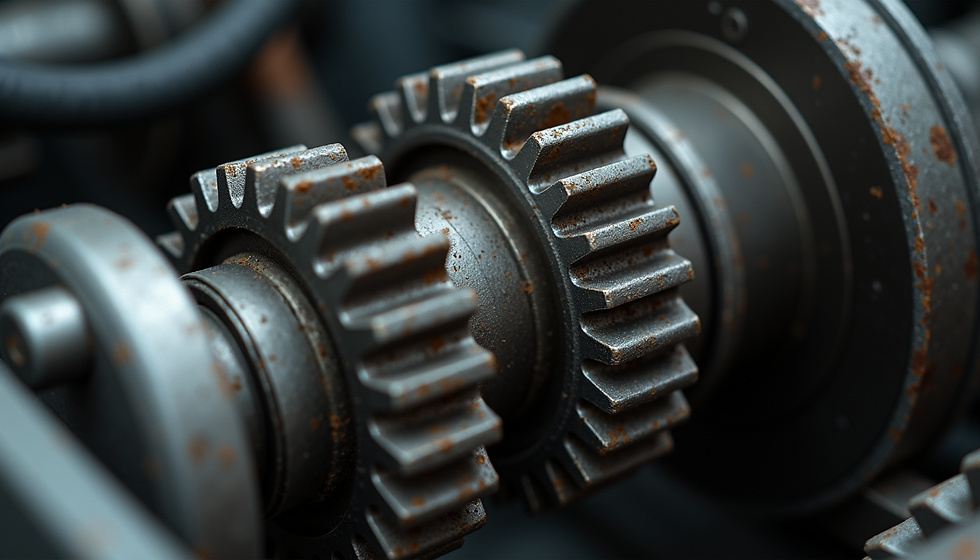Troubleshooting Toyota Steering: Uncovering the Source of Clicking Noises When Turning
- Autolast Ghana

- Jun 5
- 4 min read
Hearing a clicking noise while turning your Toyota can be a headache. While many drivers may think it's a small issue, it can signal significant mechanical problems that need attention. Understanding the possible causes of this noise is essential not just for your vehicle's health, but also for your safety on the road.
In this post, we’ll explore the common reasons behind clicking noises during turns, how to diagnose the issue, and the steps you can take to fix it. Being aware of these factors will help keep your vehicle in top condition.
Understanding the Mechanisms Behind Steering Noises
To troubleshoot steering issues effectively, it's crucial to understand how the steering system works in your Toyota. The system has several key components, including:
Steering Wheel: The control interface used to direct your vehicle.
Steering Column: The shaft that connects the wheel to the rest of the steering setup.
Steering Rack and Pinion: This part translates the wheel's circular motion into the linear movement that turns the wheels.
Suspension Components: These parts, such as control arms and ball joints, support the vehicle and aid in maintaining stability.
Problems in any of these components can lead to abnormal sounds, particularly during turns.
Common Causes of Clicking Noises When Turning
Several factors can contribute to a clicking noise while turning in a Toyota:
1. Worn CV Joint
A frequent reason for the clicking sound is a worn Constant Velocity (CV) joint. These joints are essential for transmitting power from the engine to the wheels while allowing for suspension movement.
When the CV joint is worn, it often produces a distinct clicking noise, especially during tight turns. In fact, about 70% of clicking noises in vehicles stem from CV joints, according to automotive experts.
2. Damaged Axle
A damaged axle can also be behind the clicking noise. The axle not only bears the weight of the vehicle but also transfers power to the wheels. If an axle is bent or broken, it can create popping sounds when turning.
Checking for visible signs such as fractures or unusual bends can help determine if the axle is at fault.
3. Loose or Worn Steering Components
Over time, steering components such as the steering rack, tie rods, and ball joints can become loose or worn. This wear can cause a clicking sound during turns.
Regular checks for any excessive play in these parts are crucial. For example, a loose tie rod can lead to steering issues that compromise your safety.
4. Suspension Issues
The suspension system impacts your vehicle's comfort and handling. Worn or damaged parts like bushings, struts, or shock absorbers can create clicking noises while turning.
Inspecting these components thoroughly is essential to identify any need for replacement or repair.
Diagnosing the Clicking Noise
Figuring out the source of the clicking noise requires a clear approach. Here’s how to diagnose the issue effectively:
Step 1: Visual Inspection
Begin with a visual check of the steering and suspension components. Look for signs of wear or damage. Special attention should be given to CV joints and axles for any visible issues, like cracks.
Step 2: Test Drive
Take your vehicle for a test drive in a safe area. Pay attention to the noise's circumstances—does it happen only during sharp turns, or is it present at lower speeds? Noting these details can help a mechanic pinpoint the problem.
Step 3: Check for Fluid Leaks
Look for any fluid leaks beneath the vehicle. Low levels of power steering fluid can also pose problems. If you see any leaks, it could indicate failing components that need immediate attention.
Step 4: Listen Carefully
While a professional inspection is advisable, you can listen closely to identify the noise's source. In some cases, using a mechanic's stethoscope helps isolate the sound more accurately.
When to Seek Professional Help
If diagnosing the clicking noise proves difficult or if you spot serious issues during your preliminary inspection, it may be time to consult a mechanic. Problems with critical components such as CV joints and axles can lead to dangerous driving situations if left unaddressed.
Signs You Should Visit a Mechanic
The clicking noise continues or gets louder
You have trouble steering
There is noticeable play in the steering wheel
You observe visible damage or leaks under your vehicle
Preventing Future Steering Issues
To keep your Toyota's steering and suspension components in good shape, take proactive measures. Here are some recommendations:
1. Regular Maintenance
Set up regular inspections for your vehicle. This includes checks on the steering system and other vital components. According to manufacturers, completing these tasks can prevent 30% of potential steering issues.
2. Fluid Checks
Ensure that your power steering fluid is at the proper level and change it based on the manufacturer’s schedule. Old or dirty fluid can significantly speed up wear on critical components.
3. Tire Maintenance
Maintain proper tire pressure and perform regular rotations. Uneven tire wear can affect steering and handling, potentially leading to problems down the road.
4. Avoiding Rough Terrain
When possible, steer clear of rough roads and potholes, as they can cause added stress on your steering and suspension systems.
Wrapping Up
Hearing a clicking noise when turning your Toyota might be alarming, but grasping the possible causes and solutions can empower you to address the issue effectively. Worn CV joints, damaged axles, loose steering parts, and suspension wear are common culprits.
By performing careful diagnostics and maintaining your vehicle, you can ensure a safer driving experience. If you're unsure, consulting a professional mechanic is always a smart move. Addressing steering concerns promptly not only protects your vehicle but also keeps you secure on the road.

Maintaining your vehicle is crucial for safe driving. Regular inspections and addressing any noises promptly can help prevent larger problems in the future.




Comments